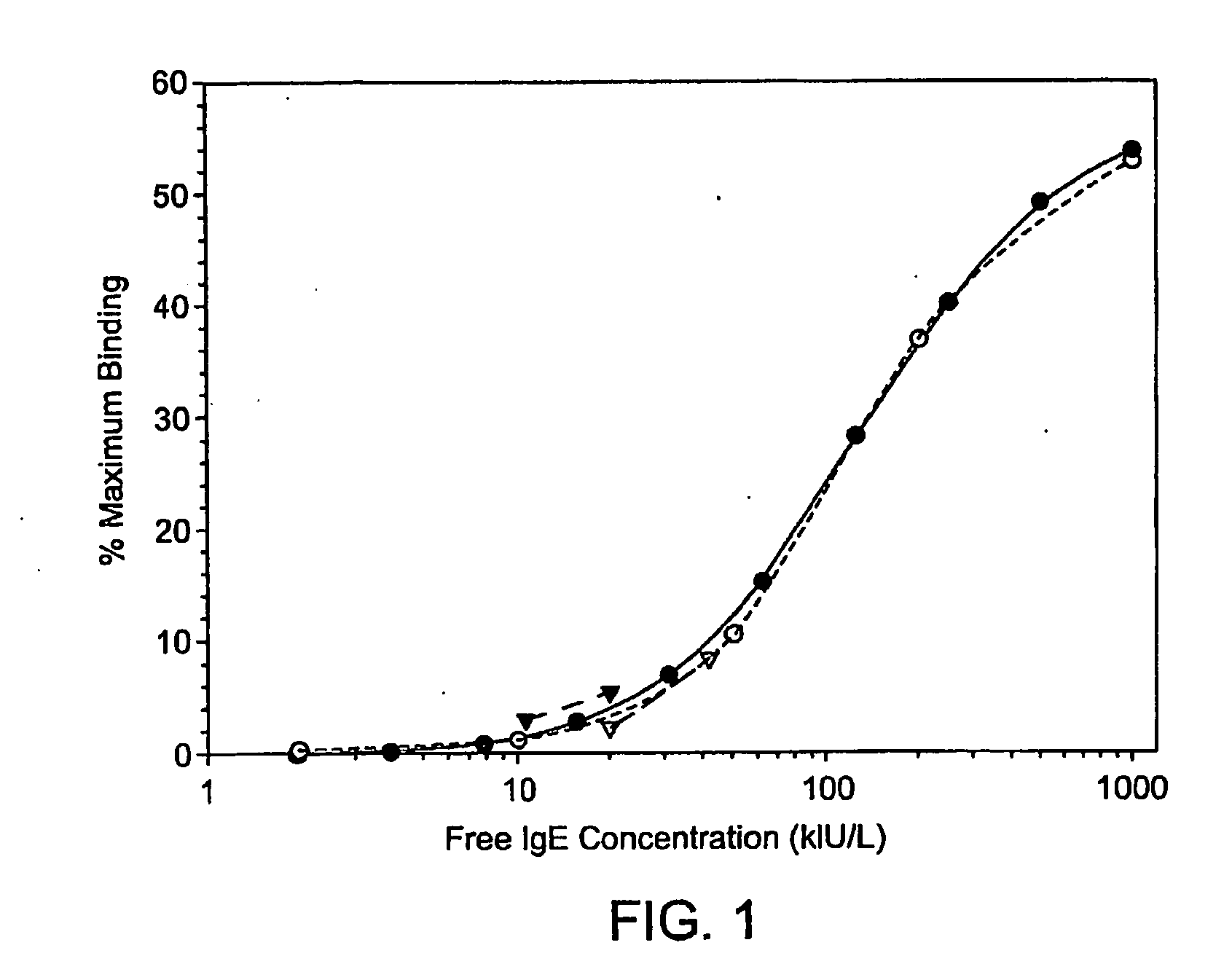Free human serum IgE immunoenzymetric assay and methods of use
a technology of immunoenzymology and free human serum, which is applied in the field of new immunoassays for quantitative measurement of free blood fluid level ige antibodies, can solve the problems of no clia-88 licensed clinical laboratory measuring free human ige, affecting the quality of life, and reducing asthma exacerbation rates, so as to reduce the level of free blood fluid ig
- Summary
- Abstract
- Description
- Claims
- Application Information
AI Technical Summary
Benefits of technology
Problems solved by technology
Method used
Image
Examples
example i
Free IgE IEMA
[0070]In preliminary experiments, various combinations and concentrations of the available human IgE specific immunochemical reagents were evaluated for their utility in the free IgE IEMA. Monoclonal anti-human IgE (clones HP6029 and HP6061) and FcεR1α were used in different combinations either as a purified reagent at 2.5, 5, 10, 20 micrograms per ml on the plate to capture IgE or as a biotinylated human IgE detection reagent at 0.5, 1, 2 and 4 micrograms per ml. To mimic a previously reported free IgE assay configuration (Casale et al, 1997), FcεR1α was initially insolubilized on plastic plates and used in combination with either clone of biotinylated anti-human IgE monoclonal detection antibody. However, purified FcεR1α displayed poor IgE reactivity when adsorbed directly onto a plastic surface. The optimal free IgE IEMA configuration was anti-human IgE (clone HP6061) adsorbed on the microtiter plate at 10 micrograms per ml to capture IgE from serum and biotinylated ...
example ii
Free and Total IgE Measurements in Patients on Omalizumab
[0073]Table 1 presents the demographics and free and total IgE serological results at baseline and 1 and 3 months following continuous Omalizumab therapy in 12 subjects with asthma. The patient group included 6 females and 6 males with ages ranging from 41 to 75. Baseline (pre-Omalizumab treatment) total serum IgE and free IgE levels as measured by IEMA agreed well with each other. The total serum IgE increased from 1.5 to 8.6 times baseline levels depending on the individual and the time interval after initiation of Omalizmab treatment (Table 1). In contrast, levels of free IgE (unbound with Omalizumab) decreased in all patients, but to varying degrees. FIG. 6 displays the total and free IgE levels at the baseline, 1 and 3 month time points in two patients (Subjects 1 and 2) who displayed among the highest and lowest decreases in free IgE following Omalizumab administration. Subject 1 achieved a 97 and 98% reduction in free I...
PUM
 Login to View More
Login to View More Abstract
Description
Claims
Application Information
 Login to View More
Login to View More - R&D
- Intellectual Property
- Life Sciences
- Materials
- Tech Scout
- Unparalleled Data Quality
- Higher Quality Content
- 60% Fewer Hallucinations
Browse by: Latest US Patents, China's latest patents, Technical Efficacy Thesaurus, Application Domain, Technology Topic, Popular Technical Reports.
© 2025 PatSnap. All rights reserved.Legal|Privacy policy|Modern Slavery Act Transparency Statement|Sitemap|About US| Contact US: help@patsnap.com



